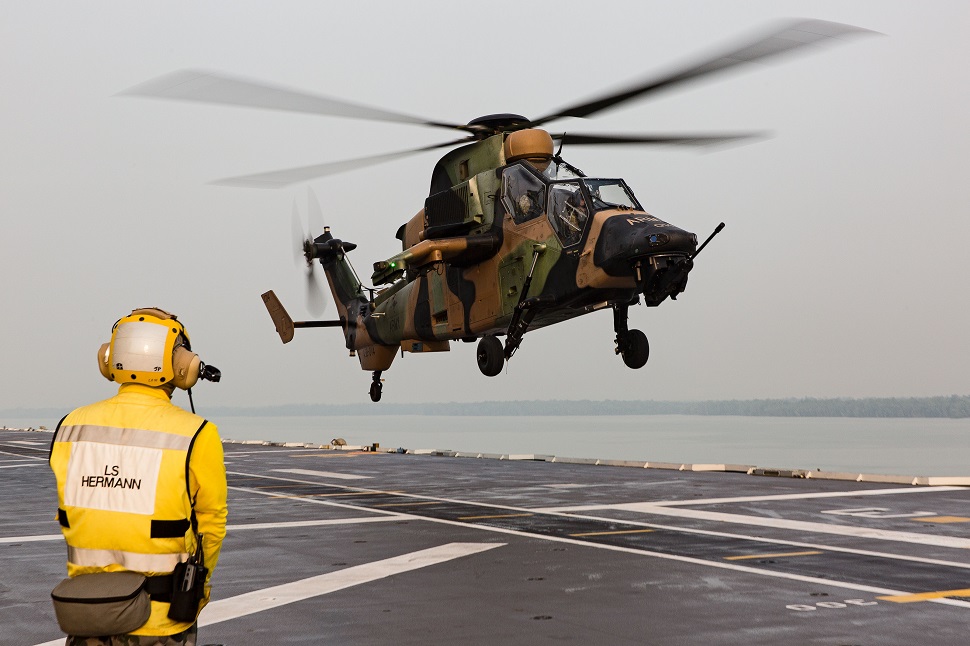Airbus Helicopters and Boeing have highlighted their pitches for Canberra’s planned acquisition of up to 29 armed reconnaissance helicopters.
Airbus Helicopters says it can take the “Tiger platform beyond 2040,” and save Australian taxpayers and the army over A$3 billion ($2 billion).
Boeing notes the long heritage of the AH-64E, and its upgrade roadmap through the late 2040s.
Both companies stressed local industrial opportunities.
The pair each issued a statement to mark the deadline for responses to a July request for information (RFI) issued by the Australian Department of Defence. The RFI related to Canberra’s Project LAND4503 Armed Reconnaissance Capability, which calls for the acquisition of up to 29 attack helicopters to replace the army's 22 Tigers.

An Australian Army Tiger landing aboard the HMAS Canberra.
Commonwealth of Australia
“Tiger is an extremely agile, effective, and digitally connected armed reconnaissance helicopter,” says Andrew Mathewson, managing director of Airbus Australia Pacific.
“Since delivery, the Australian Tiger has matured into a fully operational army capability, and is integrated into the combined arms team. It continues to prove itself as an adaptable platform, and is now a key element of Australia’s amphibious capabilities on-board the Canberra Class Landing Helicopter Docks.”
Airbus Helicopters adds that the cost per flight hour has been reduced over 30%, and the sortie success rate is above 95%.
“Boeing’s AH-64E Apache is known for its survivability, sustainability, interoperability and reconnaissance capability,” says Terry Jamison of Boeing Defense, Space and Security. “As an Apache operator, Australia would join coalition countries, including the US and UK, and regional partners Singapore, Indonesia, Japan and the Republic of Korea.”
Bell highlighted the AH-1Z's ability to embark on ships.
"The combat proven Bell AH-1Z Viper is the only marinized attack helicopter in the world that is specifically designed and built for expeditionary and maritime operations," says Bell. "Marinization is more than just corrosion protection against saltwater. Unlike unproven and costly add-ons, Bell’s marinization begins at aircraft design and is built into the aircraft at point of manufacture to insure conformity to shipboard operations."
The July RFI foresees deliveries commencing in the mid-2020s.
Initial Operational Capability (IOC) with a squadron of 12 helicopters is planned for Australia's 2025-2026 fiscal year, with Final Operational Capability (FOC) of up to 29 examples due in 2028-2029. Of the 29 helicopters, five would be located separately and used for training.
The RFI stresses that the helicopter be a mature platform, thereby reducing programme risk, with the three primary missions being reconnaissance, attack, and security. It places a strong emphasis on areas such as expeditionary capability, specifically the ability to operate from ships.
Updated with quote from Bell regarding AH-1Z.
Source: FlightGlobal.com



















